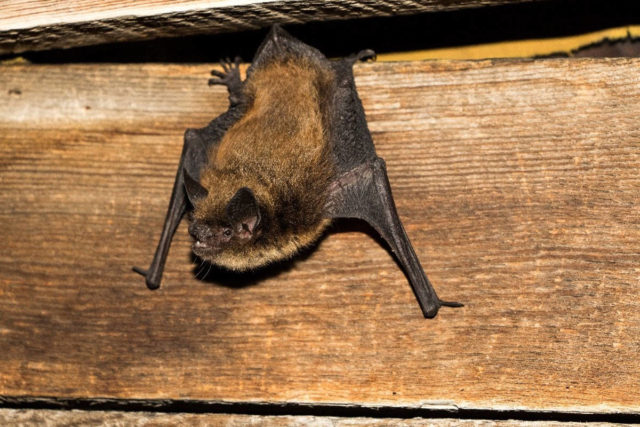By Terry Messmer
If you have spotted bats near your home or nearby structures, you are not alone. Bats are migratory and may take up residence in chimneys, structures and homes when they can find an opening. Once inside, they may form a nursery colony where they raise their young. About this time of the year, the young will take flight, and the increased activity may result in a noticeable number of droppings.
Luckily, in the next month or so, bats will migrate to find a suitable hibernation area. Until then, consider these tips to help you check your home and structures for possible points of entry.
- Around dusk when bats become active, walk around areas where you think they might be roosting and watch for them to emerge. They typically will crawl out and then drop to take flight. If you have a brick chimney that does not have a cover, they could be roosting there.
- In daylight, walk around the areas and look for smudge marks on the walls, soffit or facia. When bats enter a structure, they typically land near an opening and crawl in. Over time this creates smudge marks caused by body oils and urine.
- Once bats leave a structure, seal the openings permanently with building materials. Secure loose-fitting soffit or facia, and clean and spray-wash the openings. In many cases, re-caulking the areas will eliminate openings.
If you have had physical exposure to bats, consider this information.
- Any bat that is active by day, is found in an unusual location like a home, lawn or structure, is unable to fly or is easily approached has the potential to have rabies, which can be fatal if contracted. Statistically, however, most bats do not have rabies. Even among bats submitted for rabies testing that were weak, sick or had been captured by a cat, dog or human, only about 6% had rabies. Since rabies can only be confirmed in a laboratory, it’s not possible to tell if a bat is infected just by looking at it.
- Rabies is contracted through direct contact with a rabid bat or other wild animal. In the cases reported, those who were bit did not recognize the risk of rabies from the bite or contact with the saliva and did not seek medical advice. Each year, tens of thousands of people are successfully protected from developing rabies through vaccination after being bitten by an animal.
- If you encounter a dead, sick or easily-captured bat, immediately contact your local county health official to have it tested for rabies, particularly if your family members or pets have been exposed to it.
For information about keeping your interactions with wildlife positive, visit WildAwareUtah.org.

